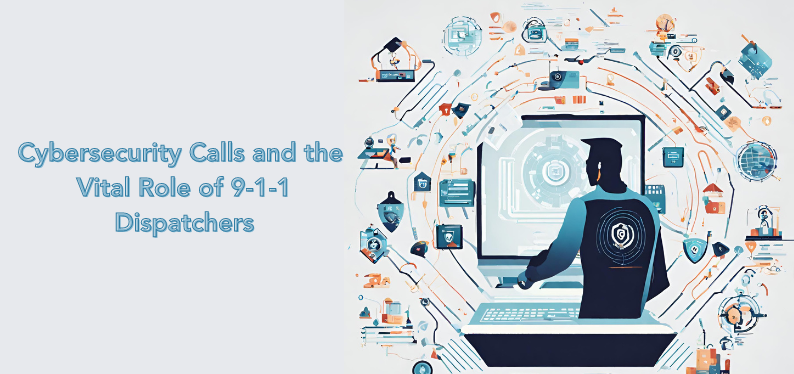In our increasingly connected world, cybersecurity has become a top concern for individuals, businesses, and governments alike. With the ever-present threat of cyberattacks, it’s crucial to have a reliable system in place to address these emergencies promptly. One often-overlooked aspect of cybersecurity is the role of 9-1-1 dispatchers. In this article, we’ll explore how these unsung heroes handle cybersecurity calls and play a pivotal role in keeping our digital world secure.
The Evolving Landscape of Cybersecurity
Before diving into the role of 9-1-1 dispatchers in handling cybersecurity calls, it’s essential to understand the evolving landscape of cybersecurity. Cyberattacks have grown in complexity and frequency, targeting everything from personal devices to critical infrastructure. These attacks can lead to data breaches, financial losses, and even threats to national security. As such, the need for a robust response system is more critical than ever.
The Role of 9-1-1 Dispatchers
9-1-1 dispatchers are the first point of contact for individuals in distress, whether it’s a medical emergency, fire, or, in this case, a cybersecurity incident. Here’s how they handle cybersecurity calls:
• Initial Assessment: When a caller reports a cybersecurity concern, the dispatcher’s first task is to assess the situation. They ask questions to gather vital information, such as the nature of the incident, any ongoing threats, and the potential impact. This initial assessment is crucial in determining the appropriate response.
• Active Listening: Dispatchers are trained to actively listen to callers, ensuring they provide all relevant details about the incident. This information can help cybersecurity experts understand the scope of the problem and take immediate action.
• Routing to Experts: In many cases, cybersecurity incidents require specialized expertise. Once the dispatcher has gathered sufficient information, they route the call to the appropriate authorities or cybersecurity professionals who can handle the situation. This may involve connecting the caller with a computer emergency response team (CERT) or a cybersecurity incident response team (CIRT).
• Providing Guidance: While waiting for experts to arrive or take control of the situation remotely, dispatchers may provide callers with guidance to mitigate immediate threats. This can include steps to disconnect compromised devices from the internet or other measures to contain the incident.
• Coordination: Dispatchers play a critical role in coordinating the response efforts. They ensure that relevant agencies or departments are informed and working together to resolve the cybersecurity incident efficiently.
Challenges Faced by 9-1-1 Dispatchers in Handling Cybersecurity Calls
Handling cybersecurity calls presents unique challenges for 9-1-1 dispatchers:
• Technical Knowledge: Dispatchers need a basic understanding of cybersecurity concepts to effectively triage calls and relay essential information to experts. Training in this area is essential.
• Caller Anonymity: Cybersecurity callers may be hesitant to reveal their identity or share sensitive information. Dispatchers must strike a balance between respecting caller privacy and obtaining the necessary details to address the incident.
• Resource Allocation: Dispatchers must prioritize cybersecurity calls alongside other emergencies, such as medical crises or natural disasters. Proper resource allocation is crucial to ensure a swift response.
Conclusion
In an increasingly digitized world, the role of 9-1-1 dispatchers in handling cybersecurity calls cannot be understated. They serve as the first line of defense against cyber threats, effectively assessing and routing calls to the appropriate experts while providing essential guidance to callers. As cybersecurity continues to evolve, ongoing training and support for these dispatchers are essential to ensure the security of our digital infrastructure and personal information. Their dedication and expertise are crucial in safeguarding our connected world.


Recent Comments